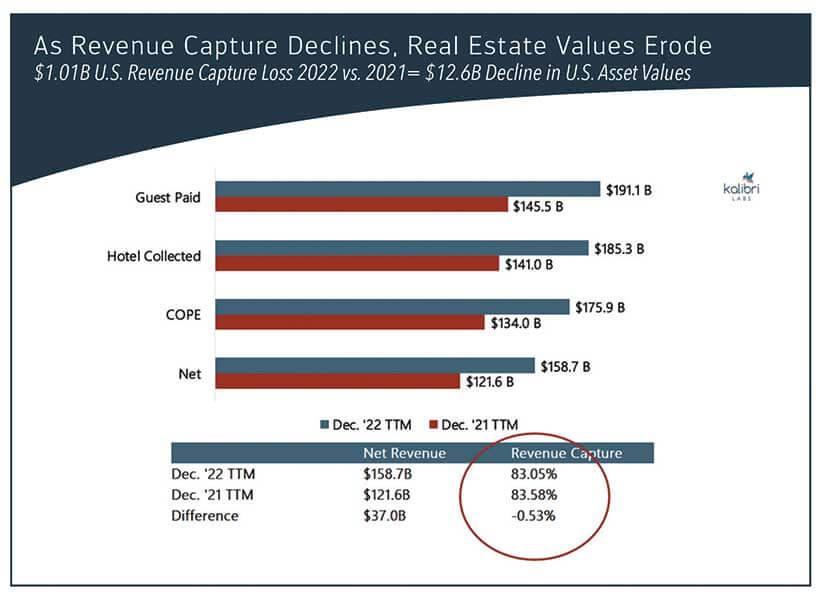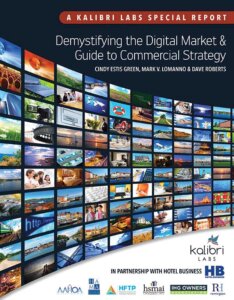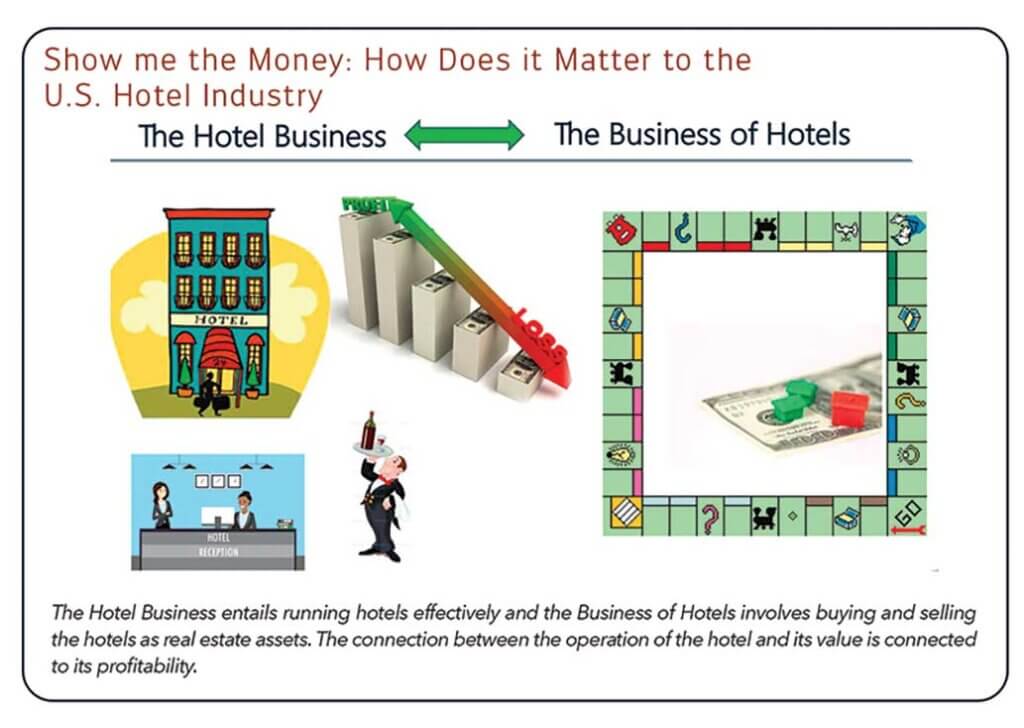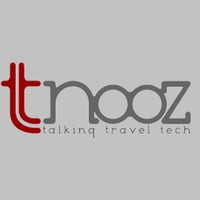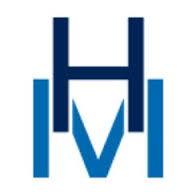20 Years Of OTAs: How They Changed The Hotel Industry class=" image-block-outer-wrapper...
In the News
Changing the Game – Kalibri Labs offers insight on the digital market and commercial strategy in new book
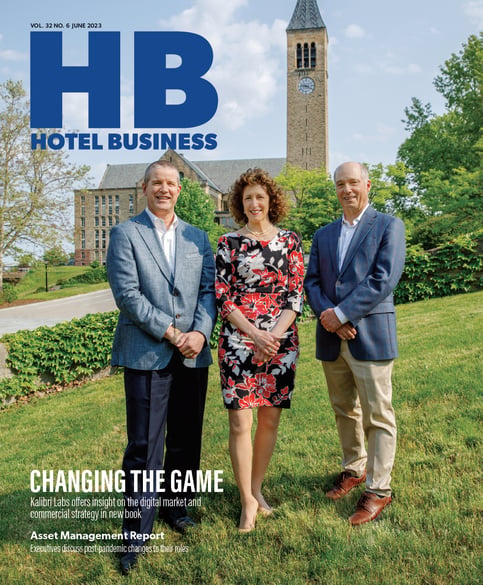
The pace of digital disruption in hospitality has only increased since the pandemic, with new rules and new players entering the playing field.
To help industry players keep up—and, perhaps, give them an edge—Kalibri Labs, in partnership with Hotel Business, has released the latest edition of its popular “Demystifying” series of books, “Demystifying the Digital Market & Guide to Commercial Strategy,” with a look at how to gain customers in a post-COVID world and at the new challenges facing hoteliers.
“I wanted hotel industry stakeholders to be well informed about a market that is dominated by digital disruptors,” said Cindy Estis Green, CEO/cofounder, Kalibri Labs. “In a world where debt service has doubled and labor costs have spiked, if hoteliers can make commercial spending decisions through the lens of improving asset value, those owning and operating hotels can thrive. This is the underlying premise of commercial strategy. Growing asset value is the new North Star for managing hotel performance.”
The book captures the state of the digital market, and Estis Green has collaborated with coauthor Mark Lomanno, partner/senior advisor, Kalibri Labs, to mine data from almost 35,000 hotels to reveal revenue performance, demand metrics and trends by segment, channel, geography and chain scale across the U.S. hotel industry. The book identifies the significant changes in the large digital technology platforms and the hotel brands, and what the implications are for hotel owners and management companies.
For this edition, Dave Roberts, professor, Cornell University School of Hotel Administration, and former SVP, revenue strategy and solutions, Marriott, has contributed to the new section on the emerging discipline of commercial strategy, which paves the way for readers to understand the urgency of measuring performance based on profit contribution. It also offers a framework to evaluate how customer acquisition techniques can be leveraged to improve asset values and streamlined to improve efficiency in the ways hotels go to market.
The book is divided into three sections, with the first dealing with digital disruption: who the players are, what they are doing and what the future looks like. The second looks at industry performance: trends and distribution channels, and how hotels are dealing with them. The third part offers techniques for hoteliers to manage more profitably.
The genesis for what would become this book began back in 2012, according to Estis Green. “In 2012, we started talking about cost of acquisition and the impact on profitability of hotels because all these owners came to me and said, ‘We can’t pay 15%, 20%, 25% to get our business and still come out [profitable],’” she said. “‘We still have labor costs and utility costs, and we still have debt service. So, what can we do about it?’”
She started Kalibri Labs to collect data to track the cost of customer acquisition and the channels and rate categories that are the basis for the industry’s demand, while creating some tools for hotels to use to make better decisions along the way. “And then, as the database became more robust, I worked with data science and machine learning to develop some algorithms to predict performance in the future and to develop what we have called the optimal business mix,” said Estis Green. “So, for hotels, instead of comparing themselves to five hotels in their market, [they would]actually compare themselves to the best they can do when considering all of their competitors in each segment of business.”
With the optimal business mix, Estis Green said she started asking, “What does that look like? And how much should hotels pay to get their business? And how can they manage it in a way that gives them the highest profit contribution?”
To answer those questions, for the last five years she and her team developed the commercial strategy model, which she describes as “a next-generation discipline that integrates the decisions of sales, digital and revenue management so hotels can develop a plan and right-size their spending,” she said. “A lot of people want to do something different. [With the pandemic,] labor costs have skyrocketed and with inflation, debt service has doubled in cost. During COVID, most of the revenue and sales teams were cut in half, and everybody was saying, ‘How can we operate effectively now?’ So the commercial strategy framework helps create the organizational and process structure to operate, with everything targeted toward improving profit contribution and increasing asset value.”
Estis Green created metrics to evaluate factors like profit contribution and understanding the business by channel and rate category, and what it means to do trade-off analysis where one type of business is compared to another to create a mix of business to see what is most profitable. “Looking at loyalty contribution: If you have guests who come back multiple times vs. having to find new guests and cycle through new guests every time,” she said. “How does that change the cost parameters for a hotel? It’s more concrete practical suggestions for someone running a group of hotels or individual hotel as to how they might think about their business differently.”
The right mix is vital. “You’ll always have a variety of business for hotels,” said Estis Green. “There are very few hotels that get only one kind of business, but the [strategy]helps hotels make the right judgment to ask, ‘How many corporate accounts should I take? Is there a point where it’s better for me to put money into my brand’s loyalty member program and promote through the website?’ The people making the decisions for individual hotels have to be better informed so that they make those decisions, keeping in mind the value of the asset they’re actually working for. Because, right now, most people who run hotels don’t think about asset value.”
Commercial strategy certification
In addition to the book, hoteliers will have the opportunity to take an online course to become certified in commercial strategy, which will be offered through Kalibri Labs with collaboration from some of the prominent industry associations sponsoring the book.
While some of the details related to the certification are still being worked out (test classes will be taking place this summer with a rollout by the end of the year), Roberts pointed out the certification will involve several hours of video content, interviews with industry experts, and case study exercises, as well as readings, followed by an assessment.
“So much is changing in the industry,” he said. “A lot of people may not have their head around digital disruption and where that’s going. And I don’t say that negatively. I’ve been studying it for two years as part of my course, and I don’t quite have my head around it either. It moves very fast and is very complex. There are so many decisions to be made on sales deployment and channels, and what you’re paying and pricing and operational efforts, and what you’re doing for individual guests—all of that.”
The course will allow hoteliers to make educated decisions. “What we want to avoid is five years from now, hotel margins are terrible, and now hotel real estate is a bad investment. And the whole hotel industry is in sort of a steady state with thin margins. We don’t want that.”
The certification is targeting a specific group. “Rather than having some elite group of executives, how about the boots on the ground [like general managers, people in finance and asset managers]getting trained—and all of them understanding the nuances of the types of business, and how you make the trade-off analysis?” said Estis Green. “They have to be better informed about the profile of demand in their market: how much corporate and OTA business; how much advanced purchase through the brand website; and how much through the GDS systems. If you don’t know what’s coming in, then you can’t curate that to be able to say what’s really the best mix for my hotel based on what the flow through will be in terms of profit contribution.”
It’s a keeper
For Lomanno, the book is something that will be useful for hoteliers for years to come. “[These books] tend to have a pretty long shelf life,” he said. “It isn’t something that you’d say, ‘OK, this is what 2023 looks like.’ I think you can go to the book repeatedly over the next couple of years and say, ‘Hey, I understand this a little bit better than I did before.’ It really gives you a comprehensive look at how the industry operates and the challenges hoteliers face from multiple perspectives—internal and external.”
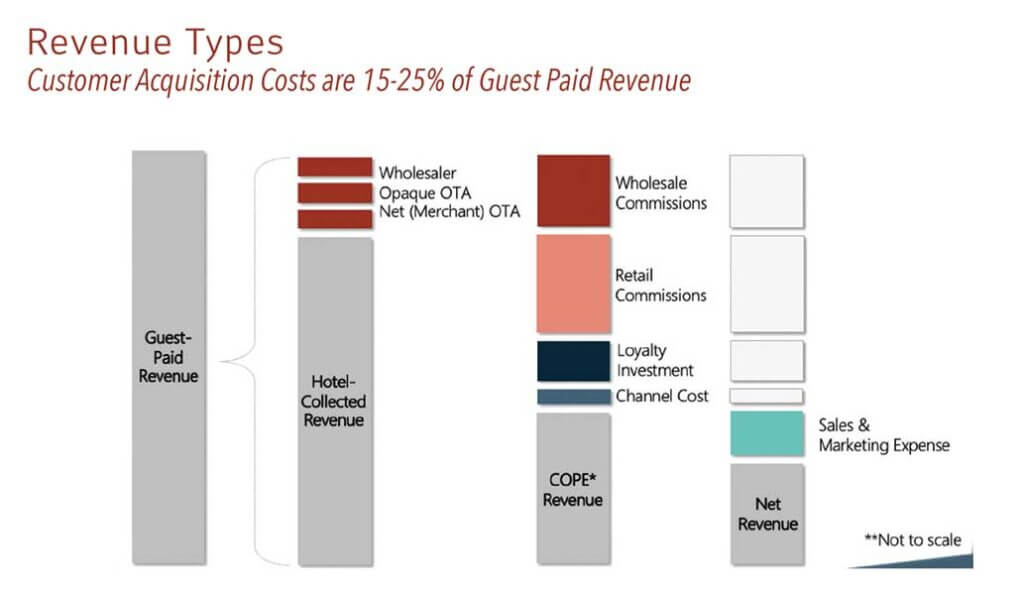
The book offers historic statistical data and illustrations that help hoteliers understand digital disruption.
Ultimately, Estis Green wants the book and the certification course to help hoteliers thrive and not have hospitality go the way of some other industries. “The world has changed, and we just need to think differently,” said Estis Green. “We want a healthier economy for the hotel industry. We’ve watched all these industries get eaten alive. Look at all the bookstores that don’t exist anymore. The world has changed because of digital disruption. So what’s in store for the hotel industry? I hope this book creates a focal point for an important dialogue across the industry about managing profitably in spite of the digital disruptors.”
She continued, “So my contribution to the industry is to introduce a way of operating that will insulate us from going the way of the mainstream bookstores where we can actually remain profitable and successful. But we can’t do it in 2025 the way we did it in 1995. The metrics have to change; the way we operate has to change. The way hoteliers spend their time and money on acquiring customers has to change.”


